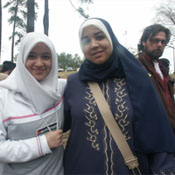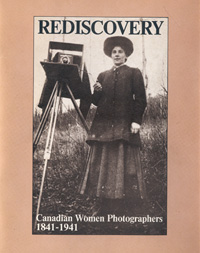
Martin
Luther King's "Poor People's Campaign 1968"
Photographs by Laura Jones
January - June, 2008
Charles Sumner School
Museum and Archives
Washington, D.C.
Photographic
Historical Society of Canada
Annual General Meeting
7:00
social plus buy and sell (old cameras, photographs)
8:00 report from the executive
followed by a presentation
Rediscovery: Canadian Women Photographers
1841 - 1941
by Laura Jones
Wednesday
April 19, 2006
Memorial Hall
North York Central Library
5120 Yonge
St.
Toronto
 Laura
Jones will show slides and prints from her personal collection and discuss the
images and lives of early Canadian women photographers.
Laura
Jones will show slides and prints from her personal collection and discuss the
images and lives of early Canadian women photographers.
Laura curated the exhibition Rediscovery: Canadian Women photographers 1841 - 1941 for the London Regional Art Gallery. The exhibition was also viewed at the Oakville Galleries, Mount St. Vincent University Gallery, Gibson House, and the Art Gallery of Ontario.
Questions? Contact info@laurajones.ca
PHOTOGRAPHS
Poor People's Campaign Washington DC 1968
Jan. - March 2008
Charles Sumner
School Museum & Archives
1201 17h St. NW
Washington D.C.
The exhibition of Laura Jones' photographs mark the 40th anniversary of the Poor People's Campaign. The location of the exhibit is a beautifully renovated school that was built in 1872 for African American children. It is distinguished with being the first school to graduate African Americans from high school.
In 1968, a mule train carried the casket of Dr. Martin Luther King Jr., to his burial site. Four weeks after Dr. King's tragic death, the mule train walked past the mint and other government buildings in Washington D.C., adding tremendous symbolism to the Poor People’s Campaign.
The Poor People’s Campaign demanded massive economic changes within the United States and the demand to take money from the War in Vietnam and put the funds into jobs, housing and health care.
For the next six weeks, blacks, Hispanics, native people, and whites lived together mostly in hastily built wooden shacks, on the sidewalks, in churches, in homes of local residents, and a few stayed in hotels.
Dr. King’s vision of the Poor People’s Campaign and his planned massive non-violent civil disobedience was described by Reader’s Digest as “insurrection”.
The Poor People's Campaign was the turning point away from a civil rights movement to a movement that included a broader commitment, crossing regional and racial boundaries, to work towards ending poverty.
Laura
Jones' photographs are a reminder of the struggle for economic justice in 1968
and the need to continue that struggle today.